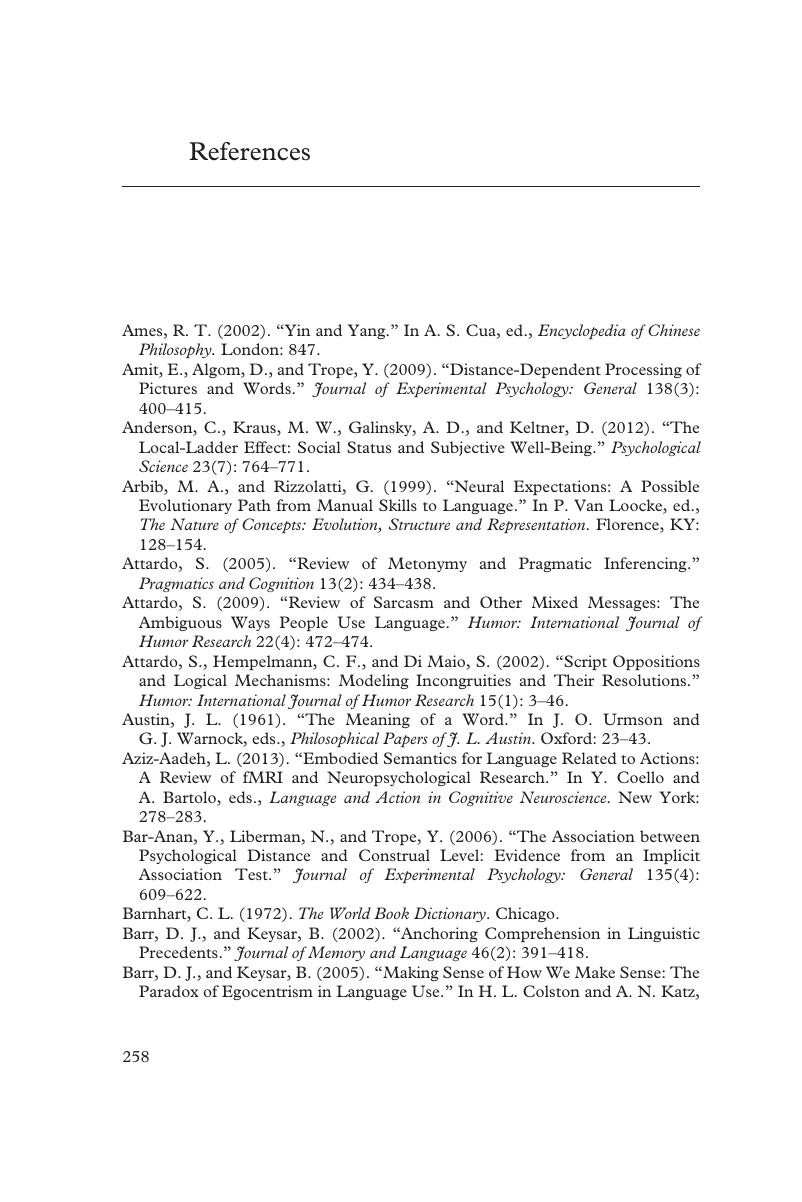Book contents
- How Language Makes Meaning
- How Language Makes Meaning
- Copyright page
- Epigraph
- Contents
- Tables
- Preface
- Acknowledgments
- A Note on Examples
- Chapter 1 The Coin Toss
- Chapter 2 Deviance
- Chapter 3 Omission
- Chapter 4 Imprecision
- Chapter 5 Indirectness
- Chapter 6 Figurativeness
- Chapter 7 Language Play
- Chapter 8 THE Social Media
- Chapter 9 The Art of Language
- Chapter 10 The End Game
- Epilogue
- References
- Index
- References
References
Published online by Cambridge University Press: 25 October 2019
- How Language Makes Meaning
- How Language Makes Meaning
- Copyright page
- Epigraph
- Contents
- Tables
- Preface
- Acknowledgments
- A Note on Examples
- Chapter 1 The Coin Toss
- Chapter 2 Deviance
- Chapter 3 Omission
- Chapter 4 Imprecision
- Chapter 5 Indirectness
- Chapter 6 Figurativeness
- Chapter 7 Language Play
- Chapter 8 THE Social Media
- Chapter 9 The Art of Language
- Chapter 10 The End Game
- Epilogue
- References
- Index
- References
Summary

- Type
- Chapter
- Information
- How Language Makes MeaningEmbodiment and Conjoined Antonymy, pp. 258 - 277Publisher: Cambridge University PressPrint publication year: 2019



